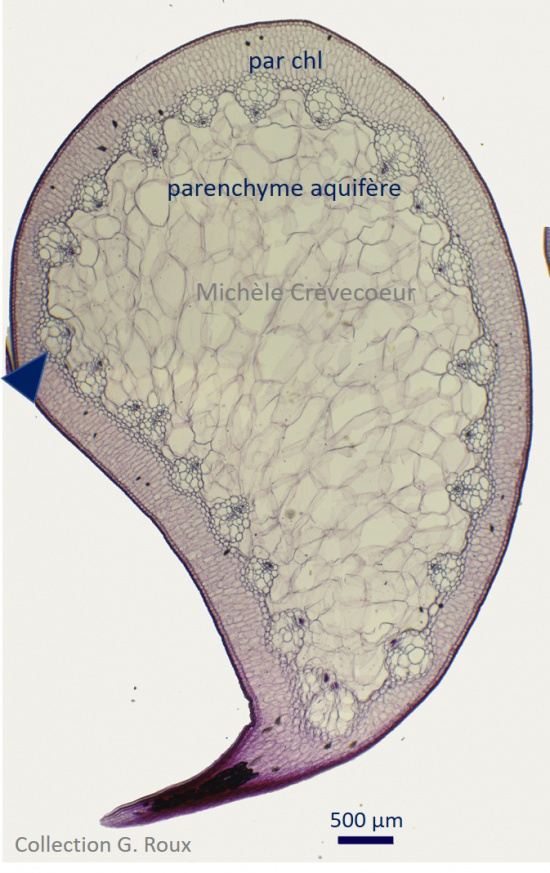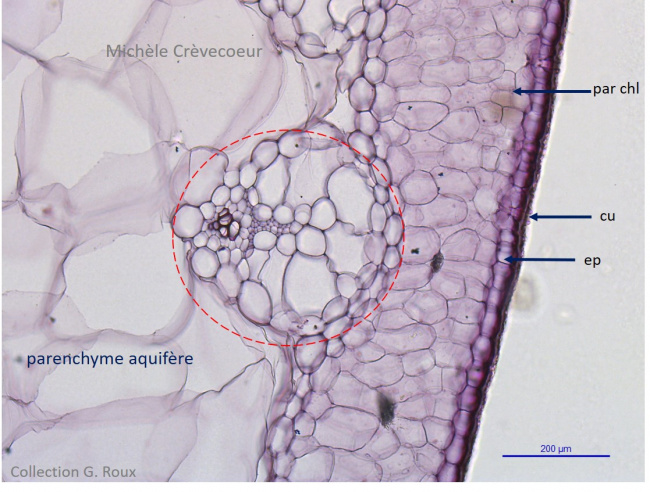Cross section in a leaf of Aloe arborescens
Aloe arborescens, common name candelabra aloe, is a large, evergreen shrub in aspholedaceae family (more than 300 species), native to austral Africa. Other name: Aloe fruticosa Lamk;
It grows up to 3 m tall in a great variety of habitats, from see level in coastal forests up to high altitude in the mountains. It is a succulent perennial plant with long fleshy leaves, grey – green, arranged in rosettes and armed with small teeth. They can reach 60 cm in length. The lamina or leaf blade tapers from the bottom to the top and looks like a sword.
Aloe arborescens is a succulent plant cultured in many tropical countries for its medicinal properties and to treat burns and woods.
The micrographs below illustrate a section from the collection of Georges Roux, stained with safranin – hemalum.
The first micrograph shows general aspect of the section with watery parenchyma, that occupies most of the mesophyll. A few layers of chlorenchyma (par chl) are observed between epidermis and watery parenchyma, The vascular bundles are disposed on a row at the limit of both parenchyma.

The micrograph below is a part of the cross section. From outside to inside we have successively: the uniseriate epidermis (ep) with its cuticle (cu), the chlorenchyma (par chl), the watery parenchyma constituted of large cells with a thin cellulosic wall. The dotted red lines encircle a vascular bundle with xylem towards the center.
